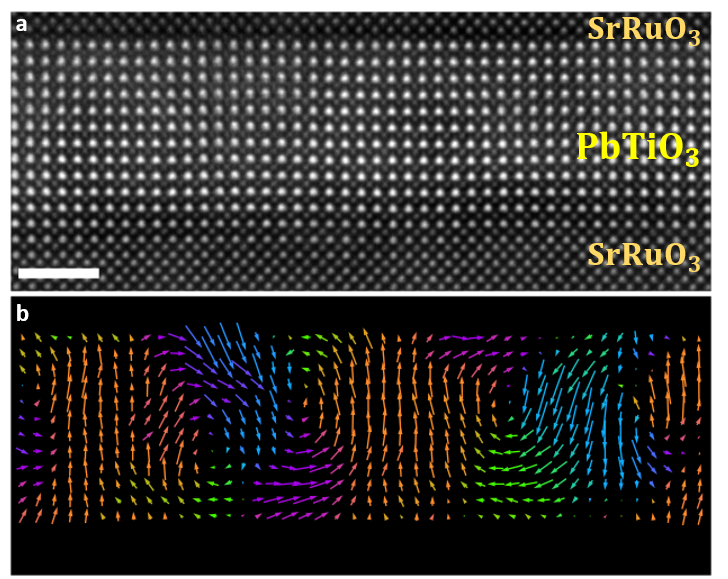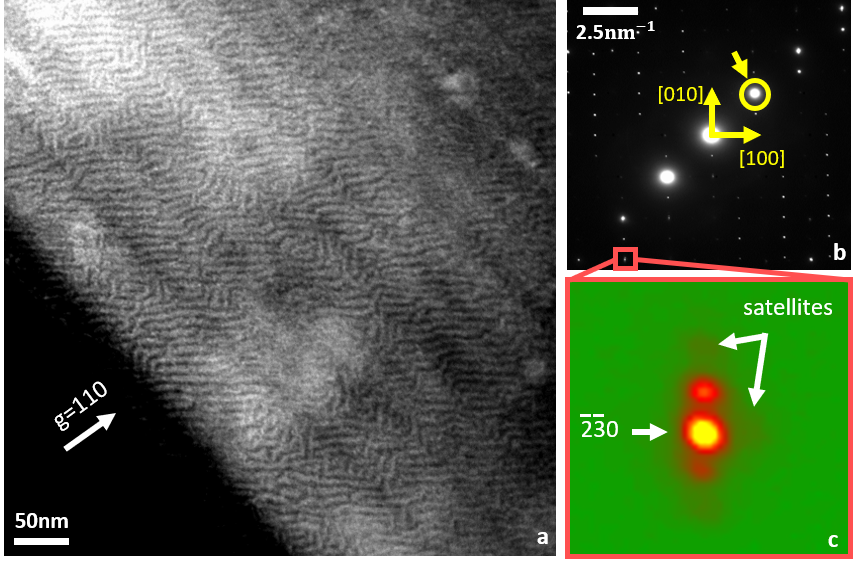Incommensurate domain topologies in ferroelectrics
- Abstract number
- 328
- Presentation Form
- Submitted Talk
- Corresponding Email
- [email protected]
- Session
- Stream 1: EMAG - Functional Materials
- Authors
- Mr. Dorin Rusu (2), Dr. Jonathan Peters (1), Prof. Thomas Hase (2), Dr. James Gott (2), Mr. Samuel Seddon (2), Prof. Ana Sanchez (2), Prof. Marin Alexe (2)
- Affiliations
-
1. Trinity College Dublin
2. University of Warwick
- Keywords
- Abstract text
Ferroelectrics are polar materials which form domains in order to minimize its depolarization field. However, under particular boundary conditions these materials can exhibit domain topologies that mirror the ones found in magnets, even polar vortices. The important difference between the magnetic and ferroelectric domains is that the latter one significantly distorts the crystal lattice. In particular, it enables the use of dark field transmission electron microscopy (DF-TEM), which shows diffraction contrast between regions where the polarization is oriented along different directions.
Here, we study epitaxially grown single layers of PbTiO3 (PTO) sandwiched between two SrRuO3 (SRO) electrodes on SrTiO3 (STO) buffered DyScO3 (110)o substrate. The local structure is resolved using a combination of scanning transmission electron microscopy (STEM) and DF-TEM. While SRO is a metallic electrode which should stabilize the polarization, cross-sectional STEM reveals pairs of clockwise/anti-clockwise formed in the ferroelectric layer (Figure 1a, b). Furthermore, plan view DF-TEM imaging shows an extended polar texture, which is presented as two periodicities along the principal [h00] and [0k0] axes, resulting in a labyrinth-like domain topology (Figure 2a). High-Dynamic-Range (HDR) electron diffraction reveals incommensurate satellites decorating the film diffraction spots (Figure 2b, c), with a distribution along the principal axes to match the X-ray data. Further analysis of the plan-view data shows the two periodicities are interwoven in such way that no region within the ferroelectric layers shows uniform domains, mimicking the recently discovered incommensurate spin crystal found in magnets. Finally, we propose a model which agrees with the experimental observations.
Figure 1 | Cross-sectional STEM. a, Annular Dark Field STEM (ADF-STEM) of the SRO/PTO/SRO tri-layers. b, Unit cell polarization mapping of the ADF-STEM image revealing the formation of clockwise and anti-clockwise vortices within the PTO layer. The scale bar is 2nm.
Figure 2 | Planar view DF-TEM. a, DF-TEM under two beam condition reveals the domain topology. b, Recorded HDR electron diffraction showing the illumination conditions. c, The diffraction spots corresponding to the PTO layer are decorated with incommensurate satellites, evidence of the domain structure.


